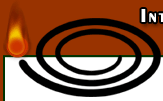






|
|
|||||

|

|

|

|

|
||
|
Further Identification
Viruses Occluded insect viruses are the most commonly found viruses. Bacteria 1. Before the insect decomposes, examine a drop of haemolymph under a phase contrast microscope. N.B. Insect gut normally contains saprophytic bacteria. You must take care not to mistake these for disease-causing bacteria. Bacillus thuringiensis: Good growth on nutrient agar, catalase positive, crystal parasporal body present. Bacillus popilliae: Little or no growth on nutrient agar, catalase negative, crystal parasporal body usually present. Bacillus sphaericus: Spores are almost spherical. No crystalline parasporal body. Fungi Entomopathogenic fungi sporulate on the outside of the host insect under moist conditions and on the inside of the host when the environment is too dry. Deuteromycete fungus: indicated by the presence of masses of powdery spores. Prominent hyphal structures, often brightly coloured: ascomycete (sexual stage) or an asexual genera e.g. Hirsutella. Entomophthorales: stout hyaline hyphae surrounded by haloes of white spore deposits. N.B. You must also use the microscope to confirm identification. Protozoa It is essential to differentiate between saprophytic gut protozoans (flagellates, amoebae) which are not pathogenic, and microsporal infections which are pathogenic. To do this, use the Giemsa stain to pick out polar filaments extruding from the spore - these are Microsporidia. Watch out for the type of locomotor organelle and the size and structure of the spores. Nematodes Mermithids: long, whitish, several times longer than the host. Rhabiditid nematodes: small and accompanied by Xenorhabdus bacteria. Heterorhabditis spp.: insect turns red. |
|
|